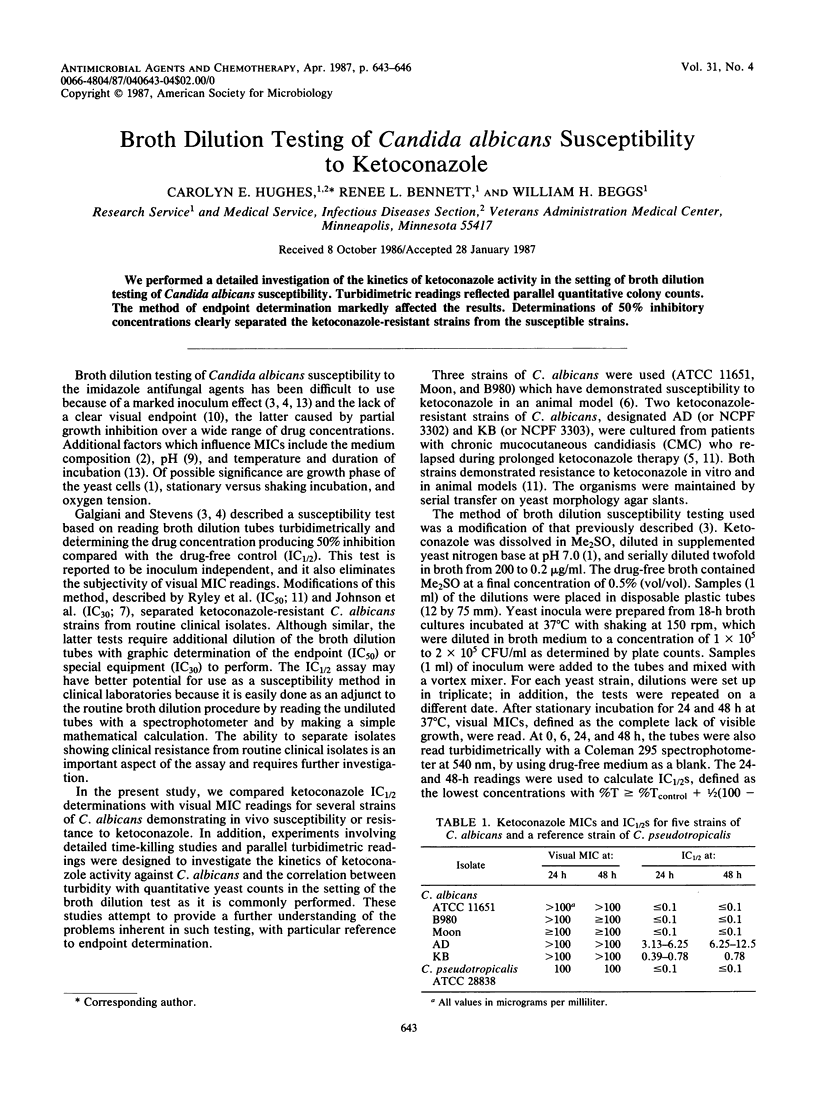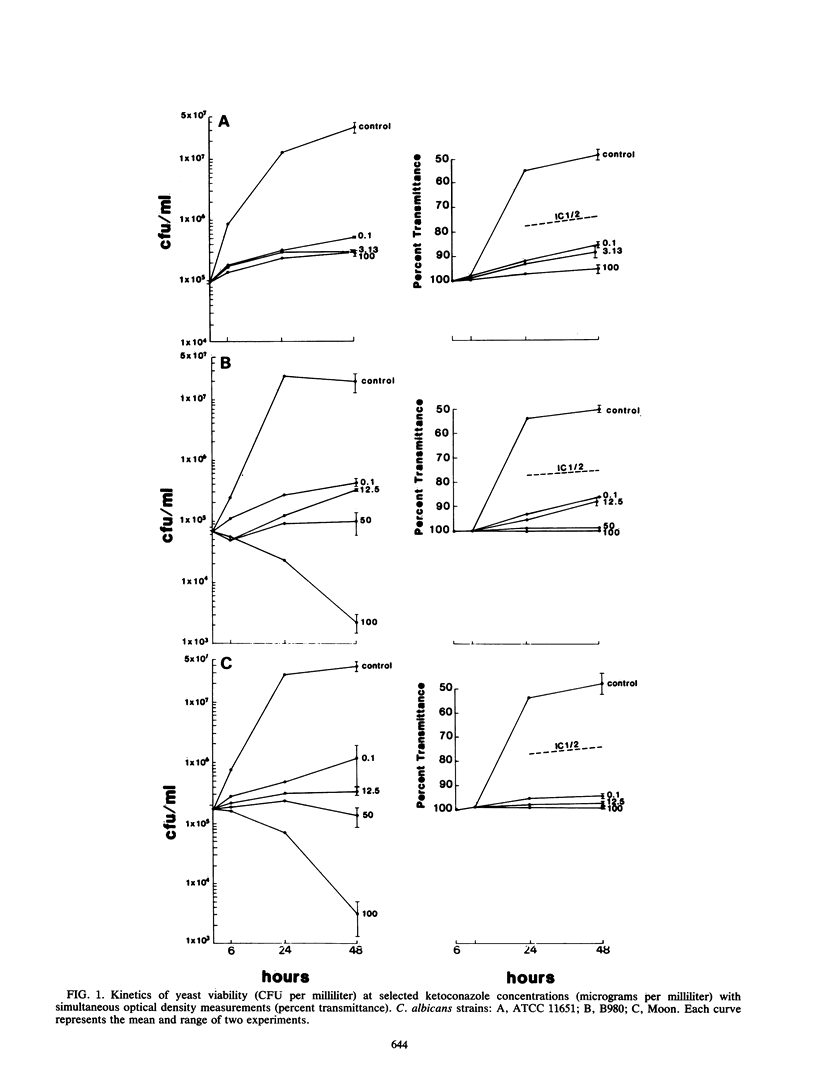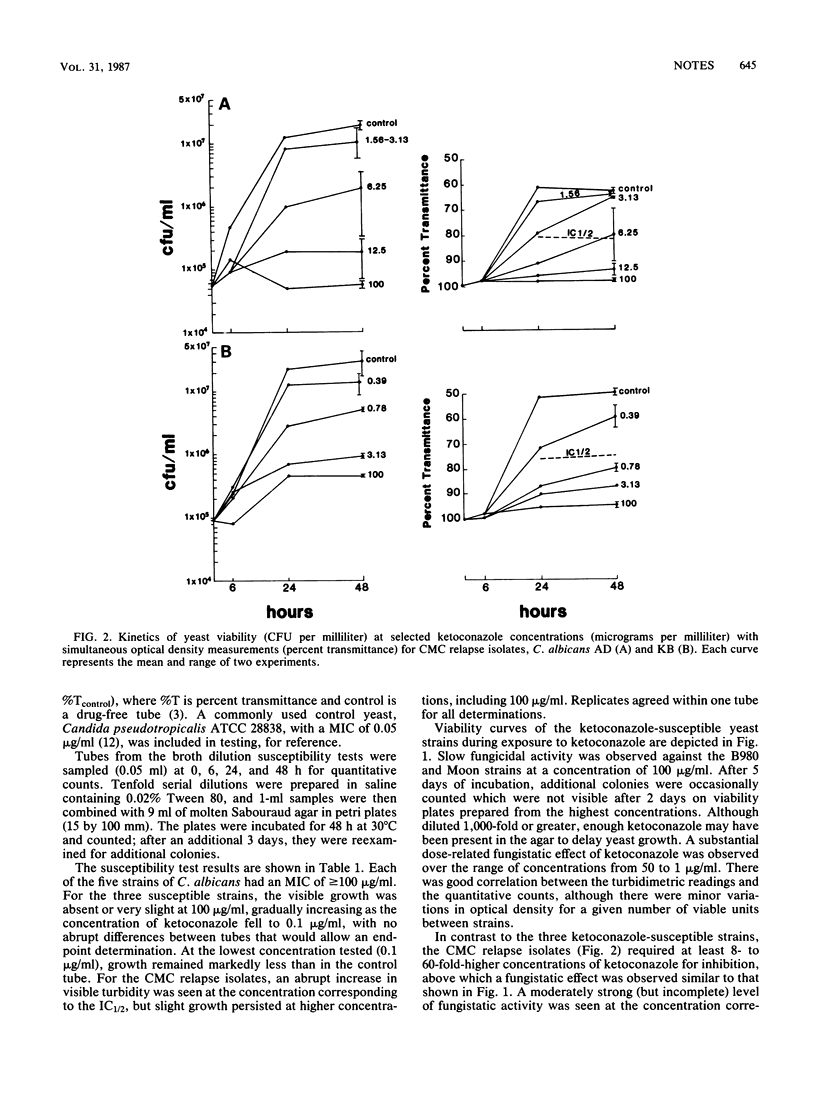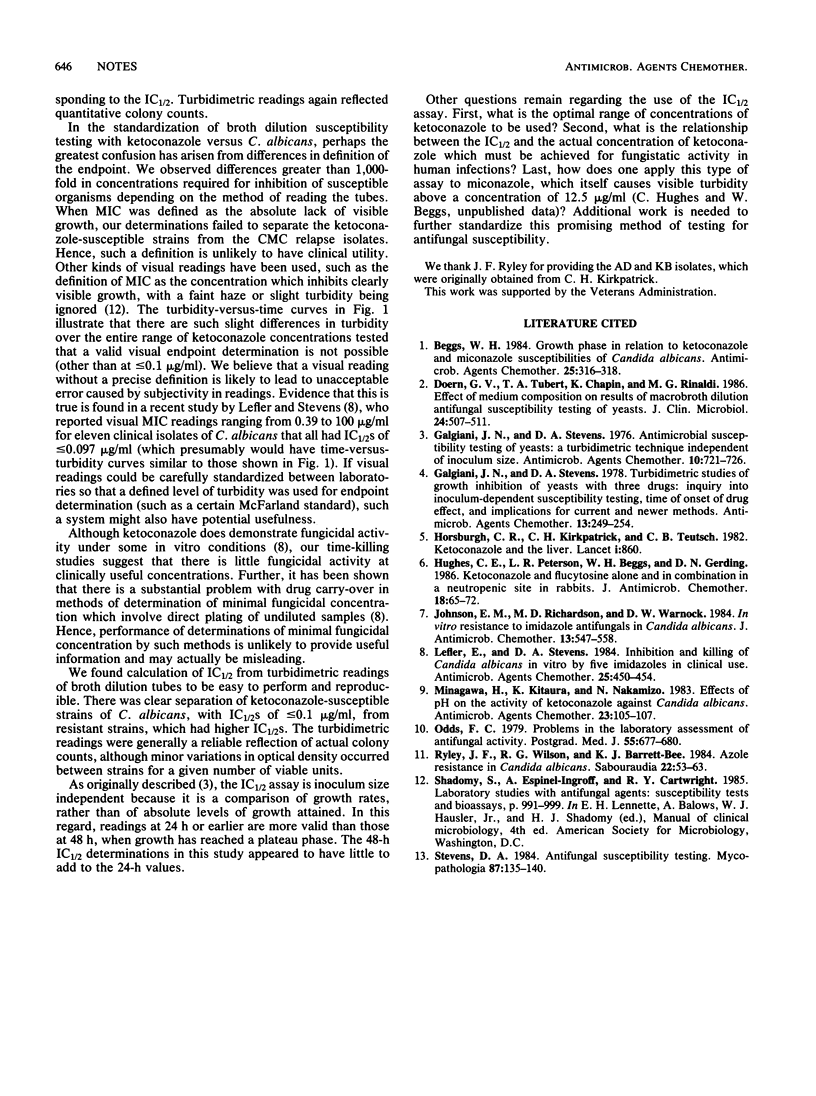Abstract
We performed a detailed investigation of the kinetics of ketoconazole activity in the setting of broth dilution testing of Candida albicans susceptibility. Turbidimetric readings reflected parallel quantitative colony counts. The method of endpoint determination markedly affected the results. Determinations of 50% inhibitory concentrations clearly separated the ketoconazole-resistant strains from the susceptible strains.
Full text
PDF



Selected References
These references are in PubMed. This may not be the complete list of references from this article.
- Beggs W. H. Growth phase in relation to ketoconazole and miconazole susceptibilities of Candida albicans. Antimicrob Agents Chemother. 1984 Mar;25(3):316–318. doi: 10.1128/aac.25.3.316. [DOI] [PMC free article] [PubMed] [Google Scholar]
- Doern G. V., Tubert T. A., Chapin K., Rinaldi M. G. Effect of medium composition on results of macrobroth dilution antifungal susceptibility testing of yeasts. J Clin Microbiol. 1986 Oct;24(4):507–511. doi: 10.1128/jcm.24.4.507-511.1986. [DOI] [PMC free article] [PubMed] [Google Scholar]
- Galgiani J. N., Stevens D. A. Antimicrobial susceptibility testing of yeasts: a turbidimetric technique independent of inoculum size. Antimicrob Agents Chemother. 1976 Oct;10(4):721–728. doi: 10.1128/aac.10.4.721. [DOI] [PMC free article] [PubMed] [Google Scholar]
- Galgiant J. N., Stevens D. A. Turbidimetric studies of growth inhibition of yeasts with three drugs: inquiry into inoculum-dependent susceptibility testing, time of onset of drug effect, and implications for current and newer methods. Antimicrob Agents Chemother. 1978 Feb;13(2):249–254. doi: 10.1128/aac.13.2.249. [DOI] [PMC free article] [PubMed] [Google Scholar]
- Horseburgh C. R., Jr, Kirkpatrick C. H., Teutsch C. B. Ketoconazole and the liver. Lancet. 1982 Apr 10;1(8276):860–860. doi: 10.1016/s0140-6736(82)91915-8. [DOI] [PubMed] [Google Scholar]
- Hughes C. E., Peterson L. R., Beggs W. H., Gerding D. N. Ketoconazole and flucytosine alone and in combination against Candida spp. in a neutropenic site in rabbits. J Antimicrob Chemother. 1986 Jul;18(1):65–72. doi: 10.1093/jac/18.1.65. [DOI] [PubMed] [Google Scholar]
- Johnson E. M., Richardson M. D., Warnock D. W. In-vitro resistance to imidazole antifungals in Candida albicans. J Antimicrob Chemother. 1984 Jun;13(6):547–558. doi: 10.1093/jac/13.6.547. [DOI] [PubMed] [Google Scholar]
- Lefler E., Stevens D. A. Inhibition and killing of Candida albicans in vitro by five imidazoles in clinical use. Antimicrob Agents Chemother. 1984 Apr;25(4):450–454. doi: 10.1128/aac.25.4.450. [DOI] [PMC free article] [PubMed] [Google Scholar]
- Minagawa H., Kitaura K., Nakamizo N. Effects of pH on the activity of ketoconazole against Candida albicans. Antimicrob Agents Chemother. 1983 Jan;23(1):105–107. doi: 10.1128/aac.23.1.105. [DOI] [PMC free article] [PubMed] [Google Scholar]
- Odds F. C. Problems in the laboratory assessment of antifungal activity. Postgrad Med J. 1979 Sep;55(647):677–680. doi: 10.1136/pgmj.55.647.677. [DOI] [PMC free article] [PubMed] [Google Scholar]
- Ryley J. F., Wilson R. G., Barrett-Bee K. J. Azole resistance in Candida albicans. Sabouraudia. 1984;22(1):53–63. [PubMed] [Google Scholar]
- Stevens D. A. Antifungal drug susceptibility testing. A critical review. Mycopathologia. 1984 Sep 30;87(3):135–140. doi: 10.1007/BF00436898. [DOI] [PubMed] [Google Scholar]


